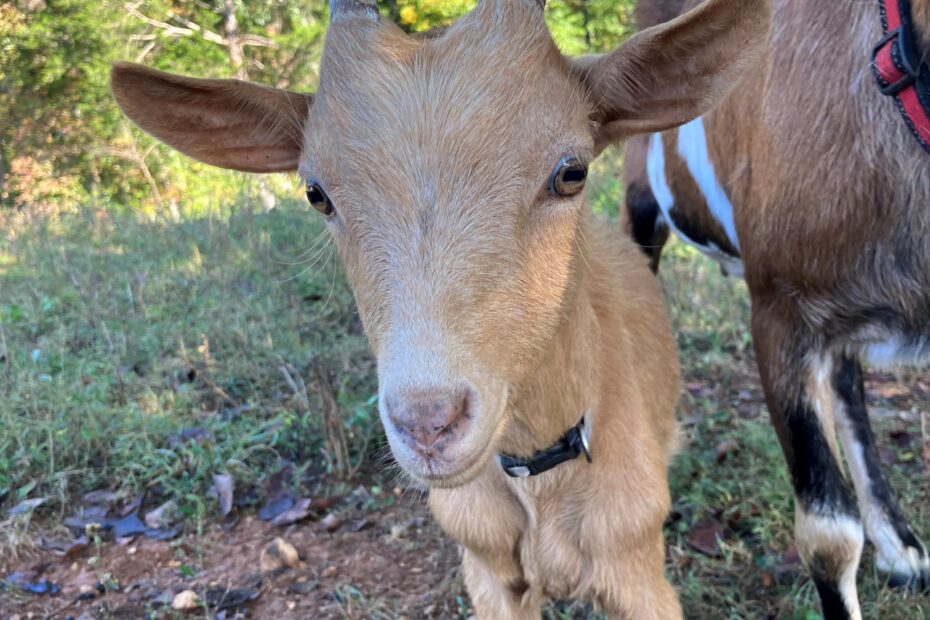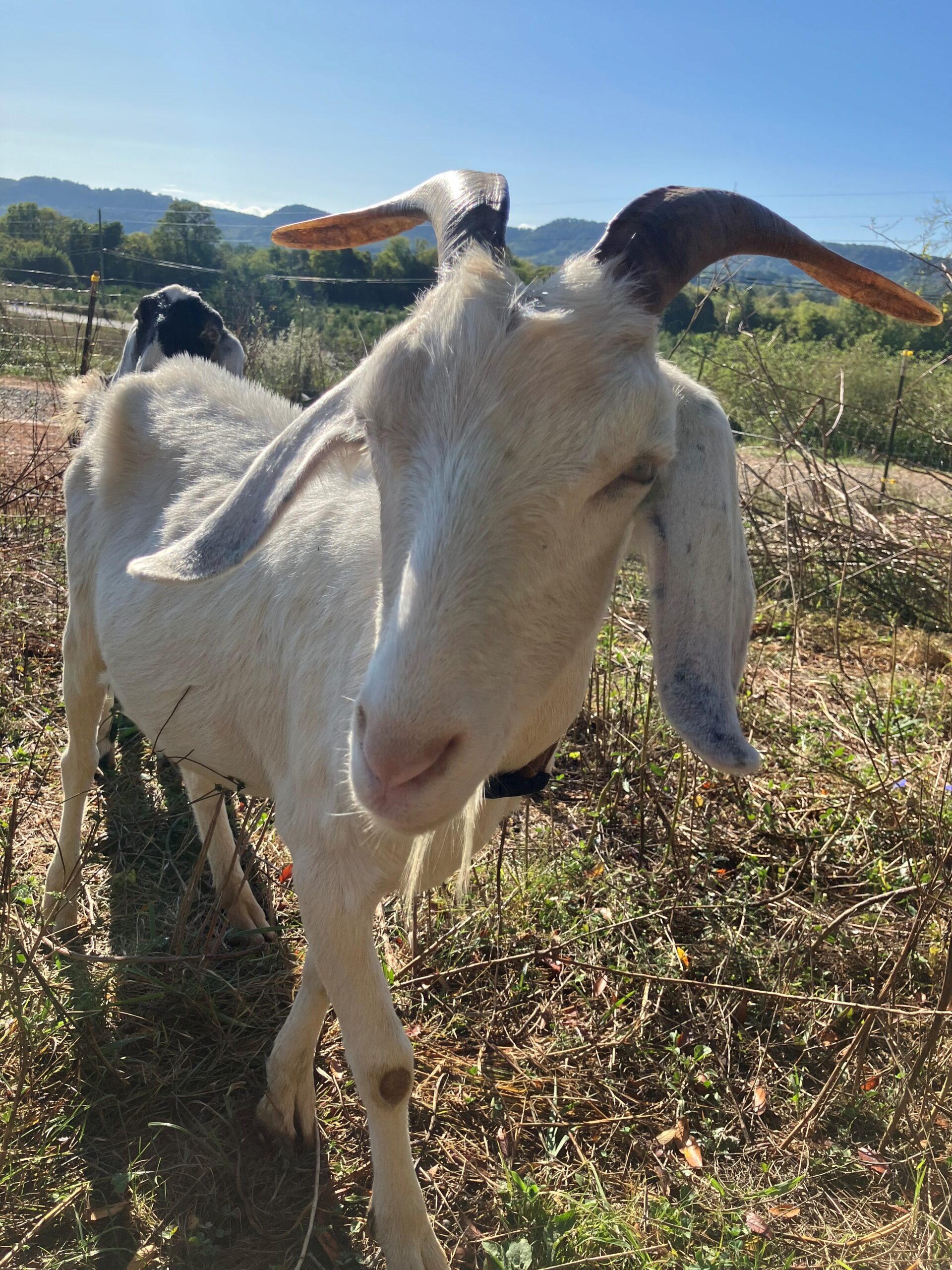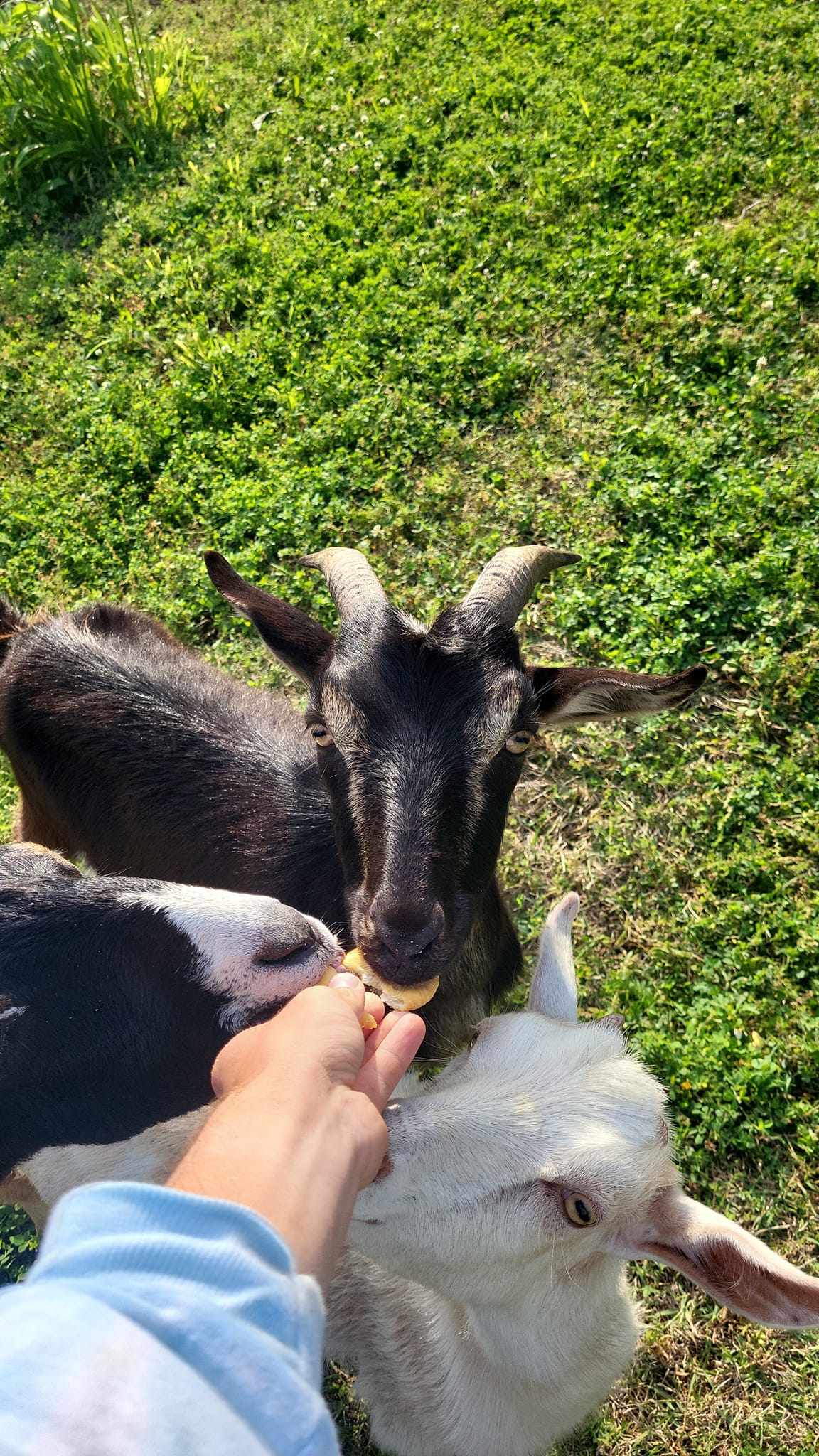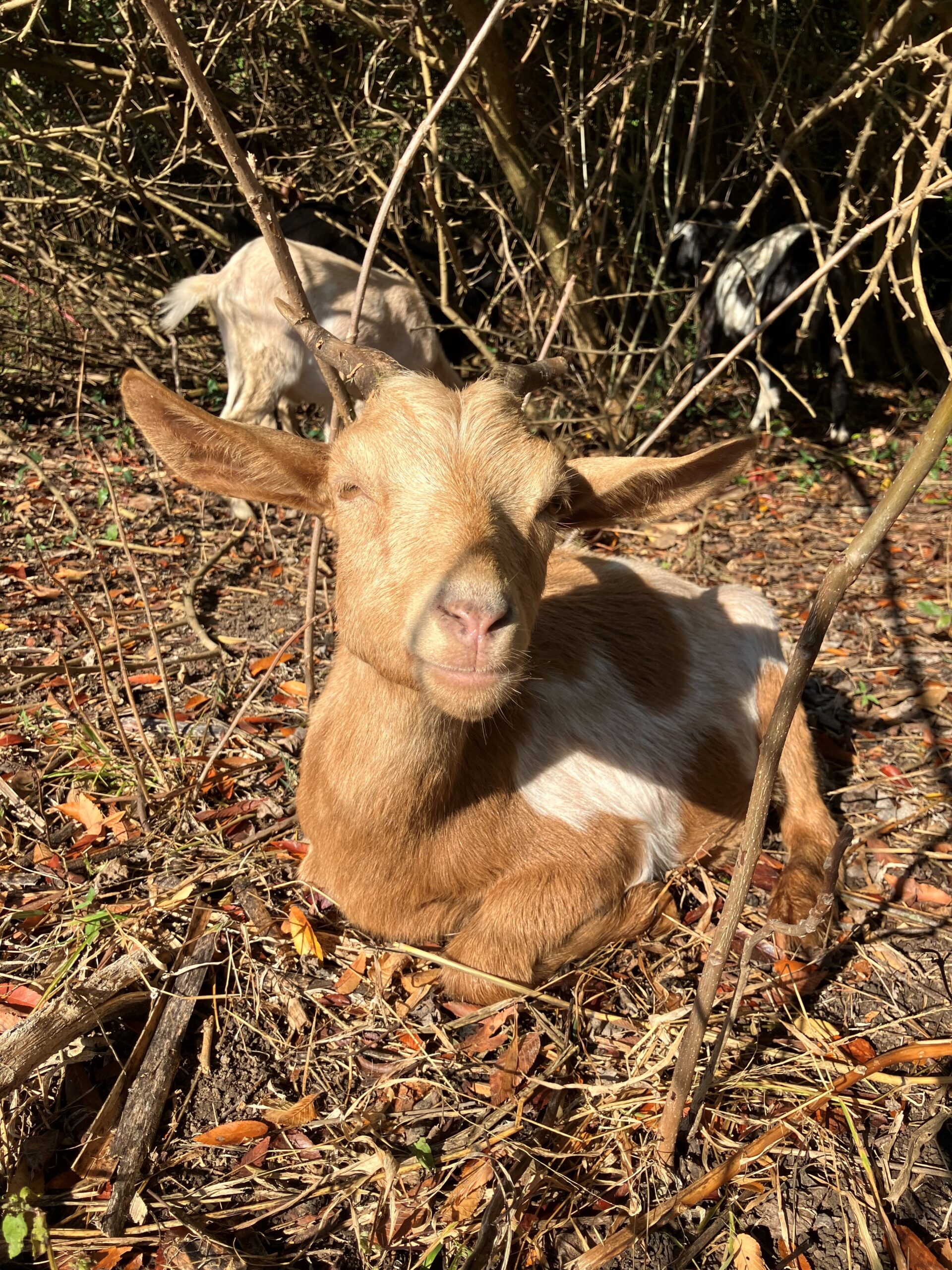Introduction
We all love goats. If you didn’t, you probably wouldn’t be reading this. Or shouldn’t be reading this. It’s all a matter of opinion, though. When it comes to goats, they have the reputation of being very hardy creatures who love to eat trash.
However, at the end of the day, this simply isn’t true. This reputation actually comes from the fact that goats prefer to munch on weeds that other animals, including fellow ruminants, sheep and cattle, consider to be “trash weeds”. In other words, goats eat plants that other animals simply won’t. Obviously, this ties into what we do here at Bales Goats, with our herds happily eating down our customer’s weeds, but less so their grassy fields.
Goats, while hardy in some ways, are still very susceptible to parasite overloads from worms and bacteria. Below, you can read up on what we do at Bales Goats to fight these parasites, as well as other warnings.
Coccidia
I suppose it would be fitting to start with coccidia. This is for two reasons: It’s literally in the name of the article, but also because it is the bacteria that is most likely to take down goat kids, which are generally weaker and less resistant to pretty much anything.
While baby goats typically start the first few days of their life with runny, clumpy, greenish-yellow poop, this clears up rather quickly after kidding. The first time, I saw baby poop, I was worried something was wrong, but after a few searches, I knew it was perfectly normal. Nonetheless, from the ages of 3 weeks to 5 months, goats are very likely to get coccidia.
You might be wondering, how would I know? Without a fecal test, you can’t be entirely sure, but it’s a safe bet that young goats with scours have coccidia if they less than 5 months old. Coccidia will quickly take a goat down, so as soon as you see signs, you will want to treat.
While there are other medicines you can get to treat coccidia, I have found success using Corid purchased from my local Tractor Supply. With this, you will treat every day for 5 days in a row, or until the scours are resolved if progress is being made. My vet recommended a treatment that will consist of 0.3 cc of Corid per 1 pound of goat weight, but always check with your own vet for their input.
As far as preventing coccidia, it’s best to have a sanitary area for the goats and for them not to be all on top of each other in a confined area. You will also want to regularly clean any sources of water and bedding. Aside from this, make sure to have a separate area to quarantine any sick goats.
A key to treating with Corid, however, is to give a one-time thiamine treatment after the Corid treatment is over, as Corid can inhibit thiamine production in your cloven-hooved friends.
You can order Corid here and get a Vitamin B Complex with Thiamine here.
Worms
General
Another parasite that goats are heavily susceptible to are worms of various types. Some people choose to put their goats on a monthly worming schedule, but I have found that this encourages parasite resistance, which you obviously don’t want. Instead, I treat at first sign of worms. It’s good to look for any sign of lethargy, scours, overall weakness, or specific signs of parasite overload such as bottle jaw.
What NOT to Use
One wormer, I highly recommend against is Safe-Guard. As my vet explained to me, Safe-Guard is a waste of money. They use the same ingredients in all of their wormers for cats, dogs, and diversified livestock, which isn’t necessarily bad, but can mean that the wormer is too weak for some goats. Obviously, not every goat is the same, but I have never had luck using Safe-Guard as prescribed on their labels. Again, however, do as your vet suggests.
Wormer Chart
The chart below is NOT my chart, however it does a great job of showing the different classifications of wormers and which ones are safe for pregnant does. Personally, I use different dosages as per my vet’s recomendations, but they aren’t that different than what I do.
If I am unable to get a fecal done on goats that I suspect have worms, I will treat with both Synanthic and Cydectin Oral Sheep Drench. This has worked well in my experience. I also will give the goat getting wormer some Liquintic or Red Cell to help strengthen the goats.
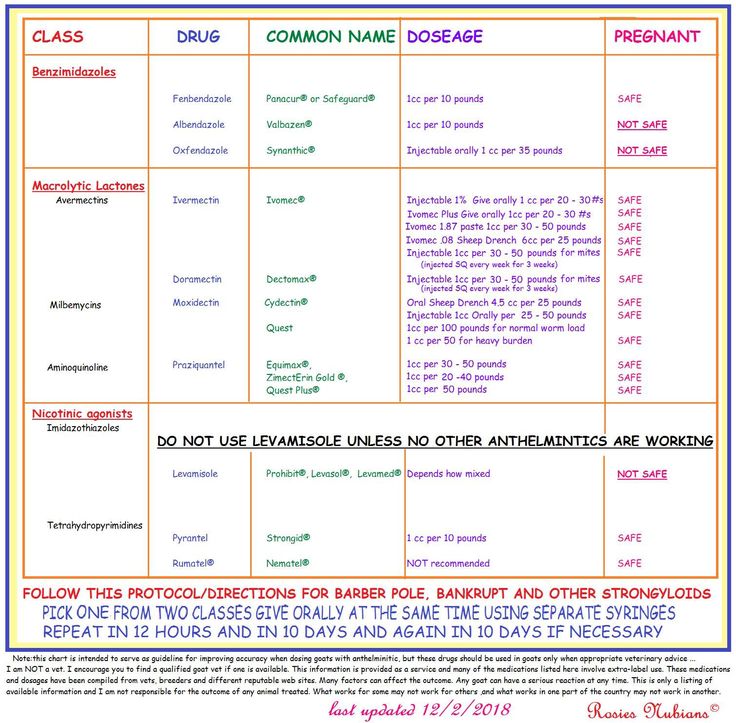
Additional Notes
Goats can also experience symptoms of parasite overloads from excessive stress, kidding, and malnutrition.
To prevent these issues, make sure that your four-legged cabritos have access to shelter, fresh water, forage or hay, and minerals 24/7. These should allow for minimal stress and help keep the goats’ body condition.
Another note that I’ve had experience with is parasitic symptoms as a result of a doe nursing. I cam outside one evening to check on Nanny and saw that he face was swollen. She had bottle jaw. I quickly had her checked out by the vet and found out she was clear of worms and harmful bacteria. I then had no clue why she was so severely anemic.
At the time, Nanny was the mother to three triplets who were too young to wean. Snap, Crackle, and Pop, as I named them, were causing both excessive stress from needing so much milk (which took a toll on their mom) and taking the majority of her nutrients almost as soon as she digested them. Because of this, the three kids were acting as parasites to Nanny. Cue every mom thinking “Relatable.”
After having this realization, I began to separate the three kids about half of the time and feeding them part-time from my registered Nubian, Everest, who was heavy in milk in the time with my ambitions to make her a milking goat. This helped me to use all of the milk Everest produced (I simply couldn’t drink enough to keep up no matter how many milkshakes and glasses of chocolate milk I fixed in a day) and allowed Nanny and her kids to all be healthier while I supplemented Nanny with additional Liquintic to boost red blood cell production and relieve her anemia.
